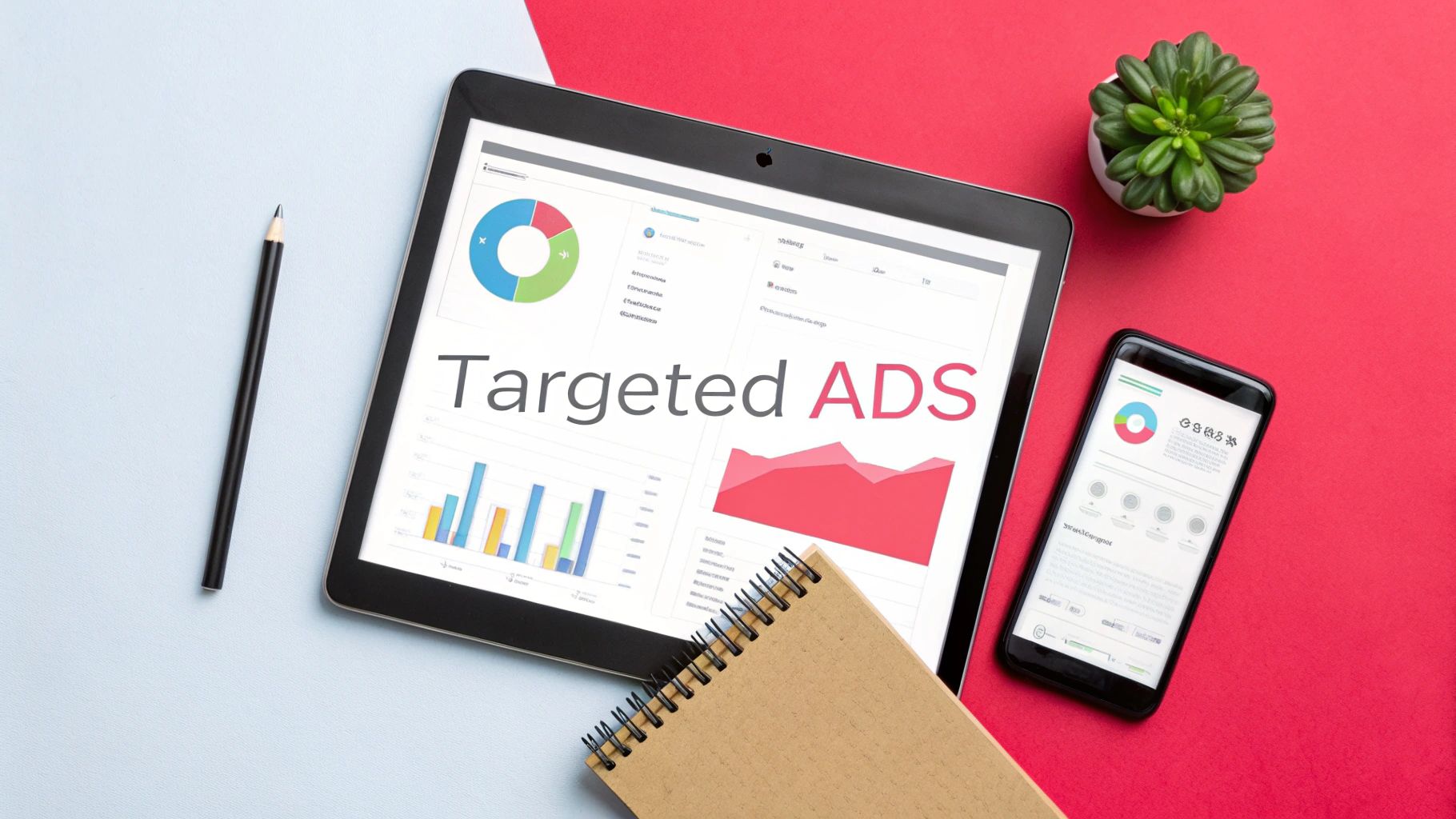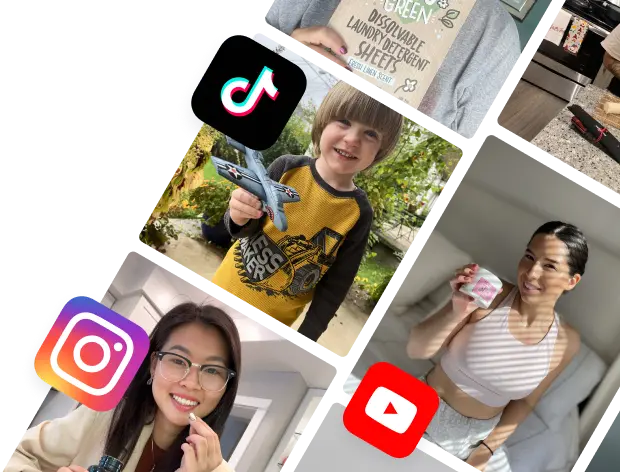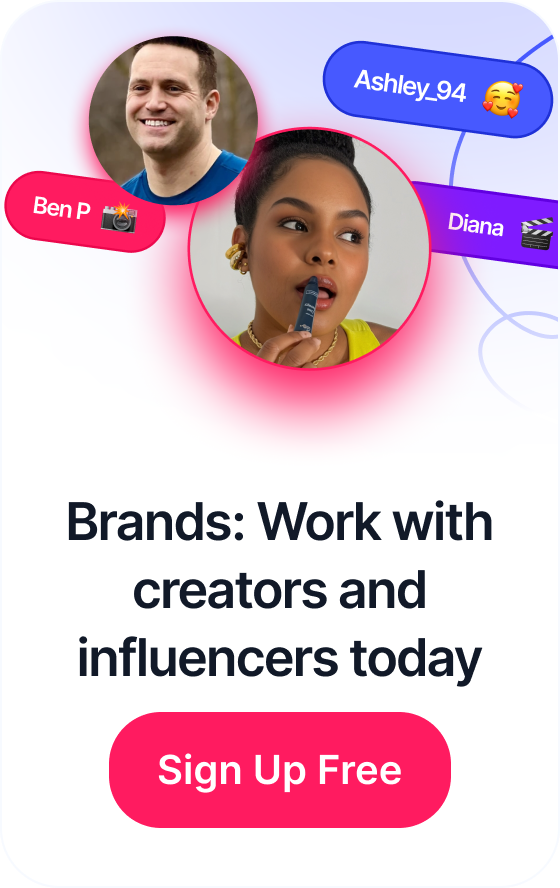 Influencer Marketing for Startups: Boost Your Brand Today
Influencer Marketing for Startups: Boost Your Brand Today
The direct-to-consumer (DTC) landscape is more competitive than ever. Gone are the days of simply running a few social media ads and watching sales roll in. To build a lasting, profitable brand in 2025, you need a multi-channel approach that builds community, fosters loyalty, and drives sustainable growth. Generic advice won't cut it.
This guide moves beyond surface-level tips to provide a comprehensive blueprint of ten proven DTC marketing strategies that top brands are using right now to win. We will dissect everything from authentic creator partnerships and community-driven social media to high-converting paid ad campaigns and strategic collaborations. While the strategies here are tailored specifically for direct-to-consumer models, it's also crucial to have a solid overall digital plan. To build a robust foundation for your DTC brand, it's critical to implement the 10 best ecommerce marketing strategies for growth in 2025.
Here, you'll find actionable steps, real-world examples, and the specific tactics you need to implement each strategy effectively. We will cover how to optimize every click for conversion, build powerful email retention funnels, and harness user-generated content to scale your business. Let's move beyond the noise and focus on what truly works.
Table of Contents
1. Email Marketing & Customer Retention
Email marketing remains a cornerstone of effective DTC marketing strategies because it allows brands to build direct, one-to-one relationships with their audience. Unlike social media algorithms that can change without warning, an email list is an owned asset, giving you a reliable channel to nurture leads, drive repeat sales, and foster long-term loyalty. This direct line of communication is essential for retaining customers and maximizing their lifetime value.

Brands like Warby Parker excel by sending personalized product recommendations based on browsing history, while Glossier uses segment-based content to deliver relevant beauty tips. Similarly, Allbirds leverages automated abandoned cart campaigns to recover potentially lost sales. Platforms like Klaviyo and ConvertKit have popularized sophisticated email automation, making it accessible for DTC brands of all sizes to implement these tactics.
Actionable Implementation Tips
- Segment Your Audience: Group subscribers based on their purchase history, engagement levels, and stated preferences. This allows you to send highly relevant content that resonates, rather than generic blasts.
- Automate Key Journeys: Set up automated sequences for critical touchpoints. A welcome series should onboard new subscribers immediately, while a post-purchase flow can gather reviews and encourage a second purchase.
- Optimize for Open Rates: Craft compelling, curiosity-driven subject lines. A/B test different approaches to find what works for your audience and aim for open rates exceeding 40% for top-tier engagement.
- Monitor Unsubscribe Reasons: Pay close attention to why people leave. This feedback is invaluable for refining your content strategy and email frequency to better meet subscriber expectations.
2. Content Marketing & SEO
Content marketing and SEO are foundational DTC marketing strategies that attract qualified organic traffic by providing genuine value. Instead of just pushing products, this approach involves creating educational content like blogs, guides, and videos that address customer pain points. By solving problems and answering questions, brands build trust and establish themselves as industry authorities, driving high-intent visitors directly to their site. This strategy is about earning an audience, not just buying one.
Dollar Shave Club mastered this with its humorous yet informative blog content that resonated with its target demographic, while Ahrefs built its entire marketing flywheel on a content hub that attracts marketing professionals. Similarly, pioneers like Brian Dean of Backlinko demonstrated how deep-dive guides can dominate search rankings and generate consistent leads. These brands prove that valuable content is one of the most sustainable channels for customer acquisition.
Actionable Implementation Tips
- Focus on Search Intent: Go beyond keywords to understand what a user is truly trying to accomplish. Create content that directly answers their underlying questions, whether they are looking for information, comparisons, or a solution to a problem.
- Build Topical Authority: Develop comprehensive content clusters around your core product categories. Creating multiple in-depth pieces on related sub-topics signals to search engines that you are an expert in your niche.
- Optimize for Featured Snippets: Structure your content to directly answer common questions. Use clear headings, bullet points, and concise definitions to increase your chances of capturing the "position zero" spot in search results.
- Refresh High-Performing Content: Regularly update your best-performing older articles with new data, examples, and insights. This keeps them relevant, maintains their search rankings, and provides ongoing value to your audience. To learn more, check out our guide on how to create a content marketing strategy on joinbrands.com.
3. Influencer & Ambassador Partnerships
Collaborating with influencers and brand ambassadors is one of the most powerful DTC marketing strategies for building authentic social proof and reaching new, targeted audiences. Instead of relying on traditional advertising, this approach leverages the trust and credibility that creators have built with their followers. This allows brands to introduce their products in a native, engaging format that feels more like a trusted recommendation than a hard sell.

This strategy was popularized by brands like Gymshark, which built a global community around its fitness ambassadors, and Fashion Nova, which achieved explosive growth through widespread collaborations with Instagram influencers. Similarly, Skims leverages both celebrity-status partners and a diverse network of micro-influencers to showcase its products on different body types, reinforcing its message of inclusivity and authenticity.
Actionable Implementation Tips
- Prioritize Micro-Influencers: Focus on creators with smaller, highly engaged followings (5k-50k). They often deliver higher engagement rates and a more authentic connection with their audience at a lower cost.
- Vet for Audience Alignment: Look beyond follower count and analyze an influencer's audience demographics, engagement quality, and brand values. Ensure their community is a genuine match for your target customer.
- Provide Unique Discount Codes: Equip each partner with a unique affiliate code or trackable link. This is a simple yet effective way to measure the direct ROI of each collaboration and attribute sales accurately.
- Build Long-Term Relationships: Move beyond one-off sponsored posts and toward long-term ambassador programs. This fosters genuine brand advocacy and creates more authentic content over time. Discover more about how to build an effective ambassador program.
4. Social Media Marketing & Community Building
Social media marketing is a vital component of modern DTC marketing strategies, evolving beyond simple promotion into a powerful tool for community building. Platforms like Instagram, TikTok, and Twitter enable brands to foster direct, authentic connections with their audience, creating a loyal following that advocates for the brand. This strategy is less about direct selling and more about building relationships, gathering real-time feedback, and turning customers into a dedicated community.
Brands like Glossier built their empire with an Instagram-first community focus, while Liquid Death uses viral, edgy content on TikTok and YouTube to create an engaged fanbase. Similarly, Skims leverages behind-the-scenes Instagram Stories to foster intimacy and authenticity. These brands prove that social media isn't just an advertising channel; it's a space to build a distinct brand identity and cultivate a passionate following, making it a non-negotiable part of any successful DTC playbook.
Actionable Implementation Tips
- Develop a Distinct Voice: Create a unique brand personality that resonates with your target audience. Whether it's humorous, informative, or aspirational, consistency is key to being recognizable.
- Prioritize Engagement: Respond to comments and DMs quickly, especially within the first hour of posting. Actively participate in conversations to show your community they are heard and valued.
- Leverage User-Generated Content (UGC): Encourage customers to share their experiences with your product and feature their content on your channels. This builds social proof and makes your community feel like part of the brand.
- Embrace Short-Form Video: Utilize Instagram Reels and TikToks by participating in trending challenges and using popular sounds. These formats are favored by algorithms and offer massive organic reach potential.
5. Paid Advertising (Facebook, Instagram, Google Ads)
Paid advertising is a critical lever for scaling customer acquisition in DTC marketing strategies. By strategically deploying ad spend across platforms like Facebook, Instagram, and Google, brands can reach high-intent audiences with precision. This approach moves beyond organic reach, using data-driven targeting to find new customers and drive predictable, scalable growth. It is the engine that fuels rapid expansion for many successful DTC companies.

Allbirds uses Google Shopping to capture users actively searching for sustainable footwear, while Kylie Cosmetics leverages visually-driven Instagram ads to showcase new products and drive impulse buys. Similarly, Bonobos runs sophisticated retargeting campaigns to re-engage website visitors who haven't made a purchase. The power of paid media lies in its ability to test, iterate, and optimize campaigns based on real-time performance data.
Actionable Implementation Tips
- Test Creative Relentlessly: Constantly test 3-5 different ad creative variations (images, videos, copy) each week. This A/B testing approach helps you identify what resonates with your audience and avoid ad fatigue.
- Build Lookalike Audiences: Upload a list of your best customers to platforms like Facebook to create lookalike audiences. This targets new users who share characteristics with your most valuable buyers, improving ad relevance and conversion rates.
- Track Your CAC Ruthlessly: Your Customer Acquisition Cost (CAC) is a vital metric. Implement proper conversion tracking via pixels and analytics tools to ensure every dollar you spend is delivering a positive return on investment.
- Use Sequential Messaging: Guide potential customers through the funnel with sequential ads. Show an awareness-focused ad first, followed by a consideration ad with product benefits, and finally a conversion-focused retargeting ad with an offer.
6. Referral & Affiliate Marketing Programs
Referral and affiliate marketing programs are powerful DTC marketing strategies that transform your existing customer base into a high-trust sales force. By incentivizing word-of-mouth recommendations, brands can acquire new customers at a lower cost than traditional advertising. This approach leverages social proof, as a recommendation from a friend is far more persuasive than a branded ad, driving both growth and loyalty.
The classic Dropbox case study showed how a two-sided incentive (rewarding both the referrer and the new user) fueled exponential growth. Similarly, Dollar Shave Club built a massive affiliate network that became a cornerstone of its early acquisition strategy, while Uber’s ride credit program made referring friends a seamless, mutually beneficial action. These examples prove that a well-structured program can become a brand’s most effective growth channel.
Actionable Implementation Tips
- Make Sharing Effortless: Design a simple, one-click sharing process. Integrate referral links directly into post-purchase emails, SMS messages, and the customer account dashboard for maximum visibility.
- Reward Both Parties: A dual-sided incentive, where both the referrer and the referred friend receive a reward (like a discount or credit), significantly increases participation and conversion rates.
- Offer Tiered Rewards: Motivate your most loyal advocates by creating a tiered system. Offer increasingly valuable rewards as they refer more new customers, fostering a sense of achievement and gamification.
- Test Your Incentives: Continuously test different reward structures. Experiment with percentage discounts, fixed cash amounts, or exclusive products to find the offer that provides the best conversion rate and ROI.
7. Video Marketing & YouTube Strategy
Video marketing is a powerhouse among DTC marketing strategies, offering a dynamic way to showcase products, tell brand stories, and connect with audiences on an emotional level. Platforms like YouTube, TikTok, and Instagram Reels enable brands to demonstrate value, educate consumers, and build a distinct personality. Video content consistently drives higher engagement and conversion rates than static images or text, making it an indispensable tool for capturing attention in a crowded digital landscape.
Viral sensations like Dollar Shave Club's launch video proved that humor and authenticity could disrupt an entire industry. Similarly, Blendtec's "Will It Blend?" series turned a simple product demo into must-watch entertainment, while GoPro built its brand on thrilling, user-generated adventure footage. These examples highlight video's power to not just sell a product, but to create a cultural moment. For DTC brands looking to implement effective visual storytelling, it's crucial to consult a practical guide to video production for business.
Actionable Implementation Tips
- Hook Viewers Immediately: The first three seconds are critical. Use a compelling question, a surprising visual, or a bold statement to stop viewers from scrolling. Learn more about crafting viral video hooks.
- Optimize for Silent Viewing: A reported 85% of social media videos are watched without sound. Always include clear, easy-to-read captions to ensure your message gets across.
- Focus on Problem-Solution Storytelling: Frame your product as the solution to a specific customer pain point. This narrative structure is more engaging and memorable than a simple feature list.
- Repurpose and Syndicate Content: Don't let your content live on just one platform. Edit long-form YouTube videos into short clips for TikTok, Instagram Reels, and YouTube Shorts to maximize your reach and ROI.
8. Conversion Rate Optimization (CRO)
Conversion Rate Optimization (CRO) is a systematic process for increasing the percentage of website visitors who complete a desired action, such as making a purchase. Instead of acquiring more traffic, CRO focuses on maximizing the value of the traffic you already have. For DTC brands, this is one of the highest-leverage marketing strategies because it directly improves ROI on all other marketing spend, from paid ads to influencer campaigns.
This discipline was popularized by platforms like Optimizely, which allow brands to A/B test different versions of a webpage to see which performs better. Thought leaders like Peep Laja and organizations such as CXL Institute have turned CRO into a core business function. DTC brands on Shopify constantly experiment with product page layouts, call-to-action button colors, and checkout flows to reduce friction and guide users toward conversion.
Actionable Implementation Tips
- Analyze User Behavior First: Use tools like heatmaps and session recordings to understand where users are getting stuck or dropping off before you start testing. Don't guess what the problem is; let data guide your hypotheses.
- Focus on Reducing Friction: Simplify forms by removing non-essential fields. Offer guest checkout options and multiple payment methods to make the purchase process as seamless as possible.
- Test One Element at a Time: To get clear, actionable results, isolate your variables. Test a headline change, then an image change, but not both in the same test. This ensures you know exactly what caused the lift in conversions.
- Run Tests for Statistical Significance: Let your A/B tests run long enough to collect sufficient data, typically at least one to two weeks. Ending a test too early can lead to false conclusions based on random fluctuations.
9. Podcast & Audio Marketing
Podcast and audio marketing have emerged as powerful DTC marketing strategies by tapping into the intimate and engaging nature of audio content. Unlike visual ads that compete for attention, audio advertising reaches consumers during screen-free moments like commutes, workouts, or household chores. This direct-to-ear approach allows brands to build trust and connect with highly niche, engaged audiences who have already opted into listening.
Brands like Masterclass effectively sponsor business and educational podcasts to reach lifelong learners, while wellness app Calm uses its own branded podcast to deepen its connection with users seeking relaxation. The growth of platforms like Spotify and the massive influence of hosts like Joe Rogan have cemented podcasts as a mainstream channel where authentic, host-read endorsements can drive significant conversions and brand awareness.
Actionable Implementation Tips
- Prioritize Host-Read Ads: Opt for host-read advertisements over pre-recorded spots whenever possible. A genuine endorsement from a trusted host feels less like an ad and more like a personal recommendation, significantly boosting credibility.
- Create Unique Discount Codes: Generate a unique, trackable discount code for each podcast sponsorship (e.g., "PODCASTNAME15"). This is the most direct way to measure ROI and identify which partnerships are driving sales.
- Align with Niche Audiences: Select podcasts whose listener demographics and interests align precisely with your target customer. A well-placed sponsorship on a smaller, niche podcast can often outperform a spot on a massive, general-interest show.
- Build Long-Term Host Relationships: Treat podcast sponsorships as partnerships, not transactions. Building a long-term relationship with a host can lead to more authentic endorsements, bonus mentions, and better rates over time.
10. Strategic Partnerships & Collaborations
Strategic partnerships are a powerful DTC marketing strategy where brands join forces with complementary, non-competing companies to expand their reach and offer unique value. This approach allows DTC brands to tap into new, highly relevant audiences, enhance brand credibility through association, and create memorable marketing campaigns. By co-marketing, creating limited-edition products, or bundling offerings, brands create win-win scenarios that benefit both partners and their customer bases.
This tactic was pioneered by giants like Nike through its high-profile collaborations with athletes and artists like Travis Scott. Modern DTC brands have adopted this model with great success. Allbirds partners with fashion designers to create unique shoe lines, while Glossier famously collaborated with FedEx on limited-edition packaging. These partnerships generate buzz and introduce each brand to an engaged, pre-qualified audience.
Actionable Implementation Tips
- Partner with Value-Aligned Brands: Select partners whose brand values and target audience closely mirror your own. The synergy should feel authentic to customers of both brands.
- Co-Create Unique Offerings: Develop a product, bundle, or experience that is exclusive to the collaboration. This creates urgency and gives customers a compelling reason to engage.
- Leverage Both Audiences: A successful partnership requires a dual marketing effort. Plan a coordinated launch across both brands' email lists, social media channels, and paid advertising campaigns.
- Set Clear Metrics Upfront: Define what success looks like before launching. Key metrics could include new customer acquisition, sales revenue from the collaboration, or social media engagement.
Top 10 DTC Marketing Strategies Comparison
| Approach | Implementation complexity 🔄 | Resource requirements ⚡ | Expected outcomes 📊 | Ideal use cases 💡 | Key advantages ⭐ |
|---|---|---|---|---|---|
| Email Marketing & Customer Retention | Medium — setup automations, segmentation, compliance | Low–Medium — ESP, copy, analytics | High ROI; repeat purchases; improved CLTV | Nurture funnels, post‑purchase, retention | Direct channel; measurable & scalable — ⭐⭐⭐⭐⭐ |
| Content Marketing & SEO | High — strategy, technical SEO, consistent production | Medium–High — writers, SEO tools, time | Long‑term organic traffic; authority; compounding returns | Brand building, education, organic acquisition | Evergreen assets; cost‑effective over time — ⭐⭐⭐⭐ |
| Influencer & Ambassador Partnerships | Medium — vetting, contracts, relationship mgmt | Medium — creator fees/commissions, coordination | Increased reach & social proof; conversion varies | Launches, niche reach, UGC campaigns | Authentic endorsements; performance options — ⭐⭐⭐⭐ |
| Social Media Marketing & Community Building | Medium–High — daily content + moderation | Medium — community managers, creatives | Brand awareness, engagement, real‑time feedback | Community building, trend-driven campaigns | Direct engagement; UGC source; loyalty — ⭐⭐⭐ |
| Paid Advertising (Facebook/IG/Google) | Medium–High — targeting, creative testing, tracking | High — ad spend, creative production, analytics | Immediate traffic & sales; scalable CAC control | Scaling acquisition, retargeting, promos | Fast, precise targeting; measurable ROI — ⭐⭐⭐⭐ |
| Referral & Affiliate Marketing Programs | Medium — tracking, incentive structure, partner mgmt | Low–Medium — rewards, platform integration | Low CAC; high-quality referred customers; viral lift | Word‑of‑mouth growth, loyalty programs | Cost‑efficient growth; strong LTV — ⭐⭐⭐⭐ |
| Video Marketing & YouTube Strategy | High — production, editing, platform strategy | High — production budget, talent, editing time | Very high engagement; conversion uplift; SEO benefits | Demos, storytelling, product launches | Best engagement & emotional connection — ⭐⭐⭐⭐ |
| Conversion Rate Optimization (CRO) | Medium–High — testing methodology, analytics | Medium — testing tools, dev support, traffic | Higher conversion rates; better ROI on existing traffic | Checkout funnels, landing pages, lead gen | Data‑driven lift; cost‑effective scaling — ⭐⭐⭐⭐ |
| Podcast & Audio Marketing | Medium — production or sponsorship coordination | Medium — production time or sponsorship spend | Niche reach; trust building; attribution is harder | Thought leadership, niche audience targeting | Intimate format; engaged listeners; lower saturation — ⭐⭐⭐ |
| Strategic Partnerships & Collaborations | High — negotiation, legal, co‑execution | Medium–High — joint resources, marketing coordination | Access to new segments; buzz and credibility | Co‑branded launches, cross‑promotions | Shared costs; extended reach; credibility boost — ⭐⭐⭐⭐ |
Integrating Your Strategies for Maximum Impact
The journey through these ten powerful direct-to-consumer marketing strategies reveals a fundamental truth: success in the DTC space is not about isolated tactics, but about building a cohesive, multi-channel growth engine. From the intimate connection of email marketing to the broad reach of paid advertising, each strategy serves a unique purpose. However, their true power is unlocked when they work in concert, creating a seamless and compelling customer journey.
Think of these DTC marketing strategies not as a checklist to be completed, but as a set of interconnected gears. Your content marketing efforts fuel your SEO, drawing in organic traffic. That traffic is then nurtured through sophisticated email automation and retargeted with highly specific paid ads. Meanwhile, your influencer partnerships generate authentic user-generated content (UGC), which provides powerful social proof for your social media channels and drastically improves the performance of your ad creative. This synergy transforms individual campaigns into a powerful, self-reinforcing ecosystem.
Your Actionable Path Forward
The sheer number of options can feel overwhelming, but progress is about focused, incremental implementation. Instead of trying to master all ten strategies at once, choose one or two that align most closely with your immediate business goals and available resources.
- For Early-Stage Brands: Focus on foundational strategies that build community and trust with a limited budget. Prioritize Social Media Community Building and Influencer & Ambassador Partnerships to generate early buzz and authentic content.
- For Growth-Focused Brands: If you have an established product-market fit, it's time to scale acquisition. Double down on Paid Advertising and Conversion Rate Optimization (CRO) to maximize your return on ad spend and turn more visitors into customers.
- For Established Brands: To defend your market position and foster loyalty, invest in retention-focused efforts. Enhance your Email Marketing & Customer Retention programs and explore Strategic Partnerships & Collaborations to tap into new, aligned audiences.
The Ultimate Goal: Building a Resilient Brand
Mastering these DTC marketing strategies is about more than just driving short-term sales. It’s about building a brand with staying power. When your referral program incentivizes your most loyal customers, who then see their favorite creators promoting your products, and receive valuable content from you via email, you create a multi-layered relationship that transcends simple transactions. This integrated approach builds a defensible moat around your business, fostering a loyal community that insulates you from market fluctuations and rising acquisition costs.
By viewing your marketing not as a series of separate channels but as one unified system, you move from simply acquiring customers to creating true brand advocates. Start small, master each component, and layer them together. The result will be a resilient, high-growth brand built for the long term.
Ready to supercharge your influencer partnerships and UGC generation? JoinBrands is an all-in-one platform that connects you with a vast network of creators to produce high-quality, authentic content at scale. Streamline your entire workflow, from discovery to content delivery, and get the assets you need to fuel your other DTC marketing strategies by visiting JoinBrands today.








